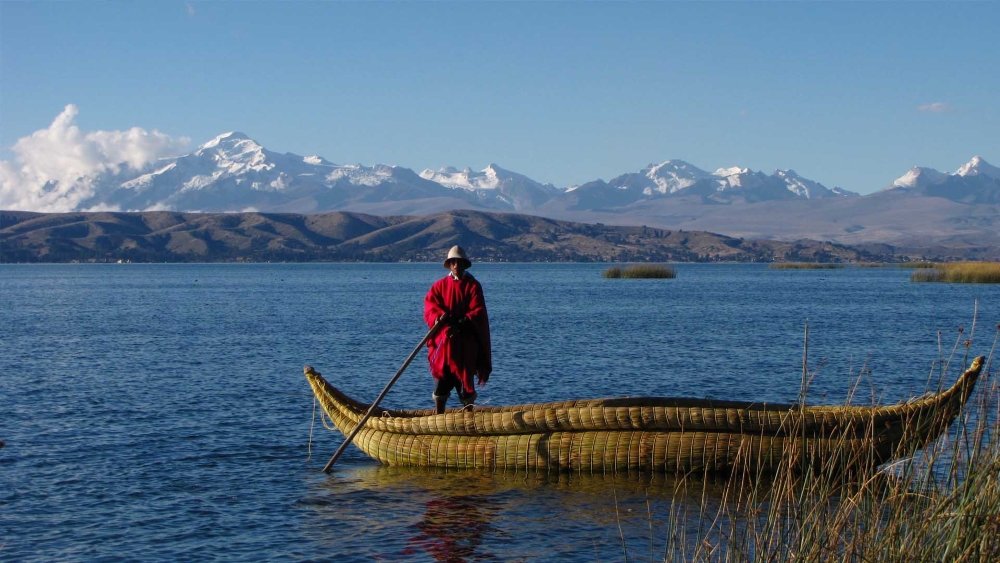Titicaca National Reserve | puno
The Titicaca National Reserve | puno is a protected area located in the Puno region of Peru. This reserve was created to protect the unique biodiversity of the area, as well as to conserve the aquatic and terrestrial ecosystems surrounding Lake Titicaca, the highest navigable lake in the world.
Within the reserve, a variety of flora and fauna species can be found, many of which are endemic to the region. In addition, the reserve is home to important archaeological sites belonging to the pre-Inca and Tiahuanaco cultures, dating back thousands of years.
Visitors to the Titicaca National Reserve can enjoy activities such as bird watching, trekking, boat trips on the lake and visits to local communities to learn about their culture and traditions. This reserve is a popular tourist destination for both national and international tourists due to its natural beauty and its historical and cultural importance.
Location
The Titicaca National Reserve is located in the Puno region of southern Peru. This region borders Bolivia and is located on the Collao plateau, at an average altitude of around 3,800 metres above sea level. Lake Titicaca, around which the reserve is located, is shared by Peru and Bolivia and is the highest navigable lake in the world.
The reserve covers an extensive area that includes both terrestrial and aquatic lands around Lake Titicaca and its surroundings. To access the reserve, visitors usually travel to the city of Puno, which serves as the starting point for exploring this protected area and its many natural and cultural attractions.
Importance
The Titicaca National Reserve is located in the Puno region of southern Peru. This region borders Bolivia and is located on the Collao plateau, at an average altitude of around 3,800 metres above sea level. Lake Titicaca, around which the reserve is located, is shared by Peru and Bolivia and is the highest navigable lake in the world.
The reserve covers an extensive area that includes both terrestrial and aquatic lands around Lake Titicaca and its surroundings. To access the reserve, visitors usually travel to the city of Puno, which serves as the starting point for exploring this protected area and its many natural and cultural attractions.
Flora and Fauna
Flora:
- Totorales:
Totorales are forests of totora reeds, an aquatic plant that grows in the wetlands of Lake Titicaca. The totora provides important habitats for various species of birds and fish, and is also traditionally used in the construction of rafts and dwellings. - Queñua:
A tree native to the Andes, adapted to high altitudes. Queñua is a dominant species in the forests of the region, and its leaves are used as fodder for livestock. - Yareta:
This peculiar plant grows in rocky areas at high altitudes and is characterised by its compact, pillowy appearance. It is a plant adapted to low temperatures and high solar radiation, and is used as fuel in some local communities.
Fauna:
- Waterbirds:
Lake Titicaca and its surroundings are home to a variety of waterbirds, including the Andean flamingo, Andean gull, Andean duck and giant tagua. These birds depend on the wetlands for feeding and breeding. - Trout:
Lake Titicaca is home to trout populations, which were introduced to the lake in the past. While trout are important for fishing and the local economy, their introduction has raised concerns about their impact on native species and the lake’s ecosystem. - Vicuña:
This South American camelid is native to the Andes and is found in the high Andean region. The vicuña has been the subject of conservation programmes due to poaching in the past, and the reserve provides protected habitats for this species. - Titicaca frogs:
Titicaca frogs are a species endemic to Lake Titicaca and its surroundings. They are known for their ability to adapt to low temperatures and lack of oxygen in the water. These frogs are an important indicator of the health of the aquatic ecosystem.
The Titicaca National Reserve is a sanctuary for a wide range of flora and fauna species, many of which are unique in the world and adapted to the extreme conditions of the Andean region. Their conservation is crucial to ensure the survival of these species and the maintenance of the ecological balance in the area.

Recommendations:
- Altitude:
The reserve is located in a high-altitude region, with an average elevation of around 3,800 metres above sea level. This makes it one of the highest places in the world where significant aquatic ecosystems are found. - Aquatic ecosystems:
The reserve protects a wide variety of aquatic ecosystems, including Lake Titicaca, the highest navigable lake in the world, as well as rivers, streams, wetlands and marshes. - Unique biodiversity:
The reserve is home to a great diversity of flora and fauna species, many of which are endemic to the region. This includes species of waterbirds, mammals, reptiles, amphibians and fish, as well as a variety of plants adapted to the extreme altitude and climate conditions. - Cultural heritage:
In addition to its natural wealth, the reserve also has important archaeological sites dating back to pre-Inca civilisations and the Tiahuanaco culture. These sites are testimonies to the rich history and culture of the region, and contribute to the understanding of the evolution of Andean societies over time. - Sustainable tourism:
The reserve is a popular tourist destination that attracts visitors interested in exploring the nature, culture and history of the region. Sustainable tourism in the reserve provides economic opportunities for local communities and promotes the conservation of the environment and cultural heritage.
In short, the Titicaca National Reserve is distinguished by its altitude, unique aquatic ecosystems, exceptional biodiversity, cultural heritage and focus on sustainable tourism.












